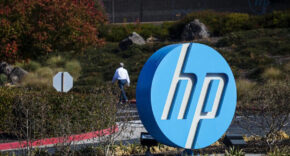A New Era of Exploration
On July 4, 2025, President Donald Trump signed the “One Big Beautiful Bill” into law during a Fourth of July celebration on the South Lawn of the White House. This legislation, celebrated by Trump and Republican leaders as a major victory, provides nearly $10 billion in new funding for NASA. It restores and expands key programs that had been facing cancellation and sends a strong message to the world: the United States is serious about returning to the Moon and preparing for a journey to Mars.
Senator Ted Cruz of Texas played a leading role in pushing for the space funding, adding an amendment that reversed cuts in the Trump administration’s own budget proposal. As Cruz wrote in a post on April 7, “The moon mission MUST happen in President Trump’s term or else China will beat us there and build the first moonbase.” He later warned in a Senate hearing, “We are not headed for the next space race. It is already here. I am hard-pressed to think of a more catastrophic mistake we could make in space than saying to communist China, ‘The Moon is yours.’”
Funding Breakdown: What Will $9.9 Billion Buy?
The bill directs $9.9 billion to NASA programs through 2032. A total of $4.1 billion is reserved specifically for the Space Launch System (SLS), NASA’s massive rocket designed to carry astronauts beyond Earth’s orbit. That money will be distributed at a rate of no less than $1.025 billion per year from fiscal year 2026 through 2029. Another $20 million will go toward Lockheed Martin’s Orion crew capsule, which is designed to carry astronauts into lunar orbit and safely return them to Earth.
In addition to these funds, the legislation includes $2.6 billion for the Lunar Gateway, a planned mini space station that will orbit the Moon and serve as a stopover point for missions to the lunar surface and beyond. Congress mandated that at least $750 million be spent on Gateway from 2026 through 2028. These investments secure the future of Artemis missions 4 and 5, which are expected to follow the upcoming Artemis 3 mission — the first planned human landing on the Moon since Apollo 17 in 1972.
Cruz’s amendment was seen as a direct response to China’s growing ambitions in space. China has announced plans to land astronauts on the Moon by 2030. Former NASA Administrator Bill Nelson put it bluntly in a 2023 interview, saying, “It is a fact: we’re in a space race. And it is true that we better watch out that they don’t get to a place on the Moon under the guise of scientific research. And it is not beyond the realm of possibility that they say, ‘Keep out, we’re here, this is our territory.’”
What Is the Artemis Program?
Artemis is NASA’s flagship lunar exploration initiative. It is named after the twin sister of Apollo, the god of the Sun, in Greek mythology — a fitting symbol since the program builds on the legacy of the Apollo missions that put Americans on the Moon in the 1960s and 70s.
Artemis 1 was an uncrewed test mission that flew around the Moon in 2022. Artemis 2, now scheduled for April 2026, will carry astronauts on a flyby around the Moon. Artemis 3, planned for mid-2027, will mark America’s return to the lunar surface. The new funding allows NASA to launch Artemis 4 and Artemis 5, ensuring a continued U.S. presence on and around the Moon through the end of the decade.
However, the program has faced technical problems. In late 2024, NASA delayed Artemis 2 from September 2025 to April 2026. Artemis 3 was also pushed back from 2026 to 2027 due to issues with the Orion spacecraft’s heat shield. These setbacks raise questions about whether NASA can return astronauts to the Moon within Trump’s current term. Still, the funding increase gives the agency a fighting chance.
Private astronaut and billionaire Jared Isaacman, who was nominated to lead NASA, believes that the current architecture using SLS and Orion is the best way to return Americans to the Moon quickly. However, he also argued during his Senate confirmation hearing that it is not a long-term solution. “Over the long term, it’s not a sustainable or affordable solution,” Isaacman said. He believes commercial launch companies like SpaceX, Blue Origin, and ULA can eventually take over many responsibilities while NASA focuses on developing technologies like nuclear propulsion.
Plans for Mars Take Shape
In addition to funding for the Moon, the bill sets aside $1 billion for a new phase of Mars exploration. President Trump has long voiced interest in sending astronauts to the Red Planet, often saying Mars is a more exciting goal than returning to the Moon. In the new legislation, $700 million will go toward the development of a Mars Telecommunications Orbiter, which must be built by a U.S. commercial company by the end of 2028. This spacecraft will support a future Mars sample-return mission as well as future crewed missions.
Jared Isaacman also supports dual efforts. He sees value in continuing both Moon and Mars missions side by side, with the Artemis program serving as a testbed for technologies that will be necessary for longer missions deeper into space.
NASA’s Science Programs Left Behind
While the Artemis program received a windfall, NASA’s science division did not fare as well. President Trump’s proposed fiscal year 2026 budget would cut the agency’s overall funding by 24 percent, reducing it from $24.8 billion to $18.8 billion. The Science Mission Directorate would suffer the biggest blow, with a 47 percent reduction in its budget. If enacted, this would lead to the cancellation of more than 40 current and planned missions.
A January 2024 Government Accountability Office report pointed out that NASA still has not produced an official cost estimate for Artemis 3. “NASA hasn’t established an official cost estimate for Artemis III, so full mission costs aren’t transparent,” the report said. Critics argue that without better financial oversight, space exploration efforts could become bloated and unaccountable.
Every living former head of NASA’s science division signed a letter to Congress asking lawmakers to stop the proposed cuts. They warned that the budget “walks away from dozens of current, extraordinarily successful and productive science missions in extended operations on a combined budget that is only about three percent of NASA’s annual funding.”
Among the missions at risk are the Juno spacecraft orbiting Jupiter, the New Horizons probe exploring the outer solar system, and the two proposed Venus missions, DAVINCI and VERITAS. Even the Mars Sample Return mission, which already has samples waiting on the Red Planet, faces potential cancellation.
Other Investments in Space Infrastructure
The bill also sets aside $1.25 billion to keep the International Space Station operational through 2029. NASA will invest $250 million each year to maintain the station until its planned retirement around 2030. In addition, $325 million is allocated for a new SpaceX-built Deorbit Vehicle, which will guide the ISS to a safe reentry over the Pacific Ocean.
Another $1 billion will go toward improving NASA’s physical infrastructure. The Johnson Space Center in Houston will receive $300 million, the Kennedy Space Center in Florida will get $250 million, and other facilities like the Marshall Space Flight Center and the Michoud Assembly Facility will receive funding for upgrades and repairs.
One controversial provision would move the retired Space Shuttle Discovery from the Smithsonian in Virginia to Space Center Houston. Supporters like Senator Cruz say the move would inspire young people in Texas, but critics warn it would be risky and expensive. Former NASA Deputy Administrator Lori Garver wrote, “We would have to take the Shuttle apart to move it at this point… If this is the priority for our tax dollars, we are doomed.”
A Bold Step with Many Unknowns
The “One Big Beautiful Bill” provides long-term funding and political backing for Artemis at a time when the program was in danger of losing momentum. It sends a clear message to America and the world: the United States is determined to lead in space.
But challenges remain. Technical problems, budget fights, and international competition will all play a role in shaping the future of American space exploration. For now, the Moon is back on the map — and Mars is rising on the horizon. Whether Trump’s bold vision will come to life remains uncertain, but the foundation has been laid, and the countdown has begun.





